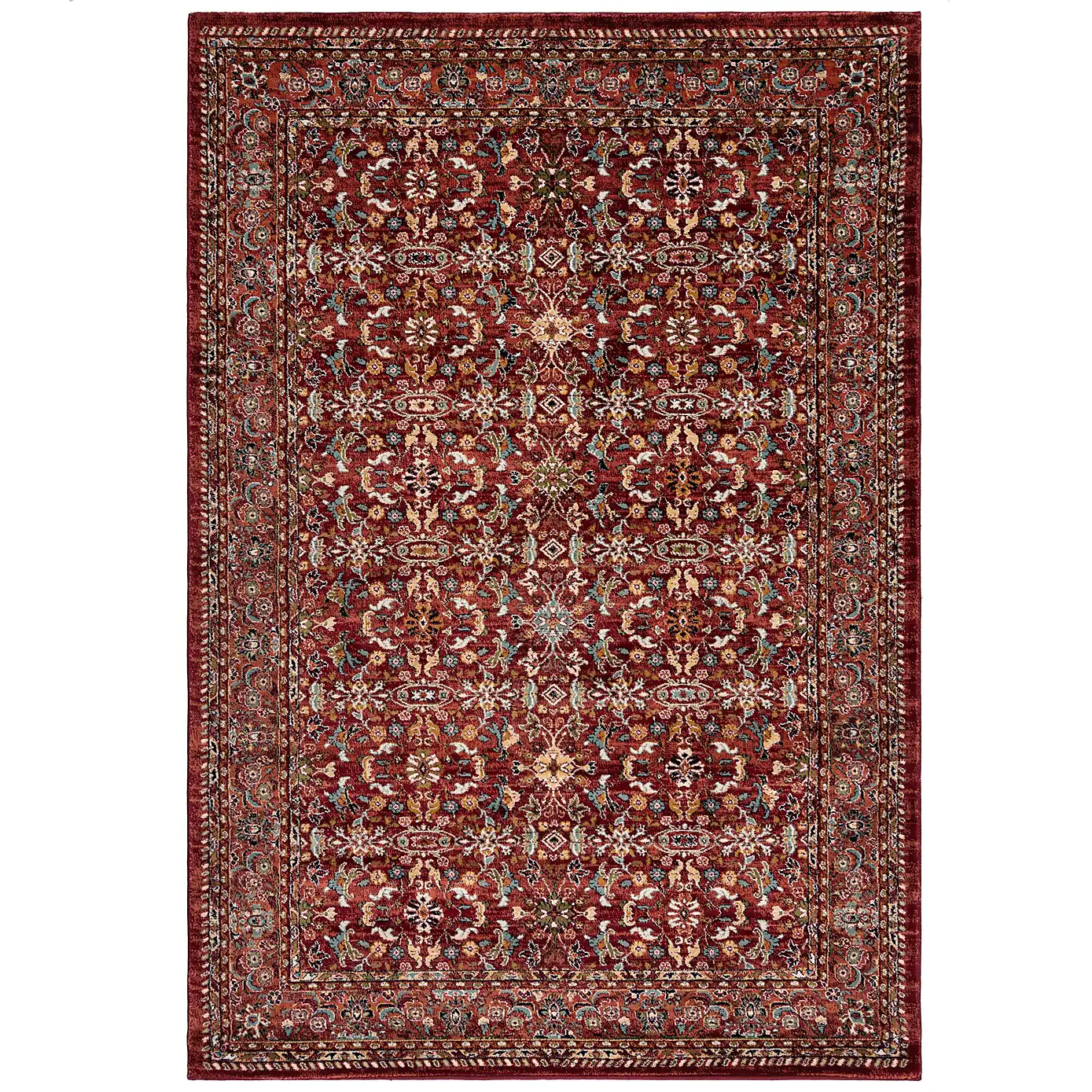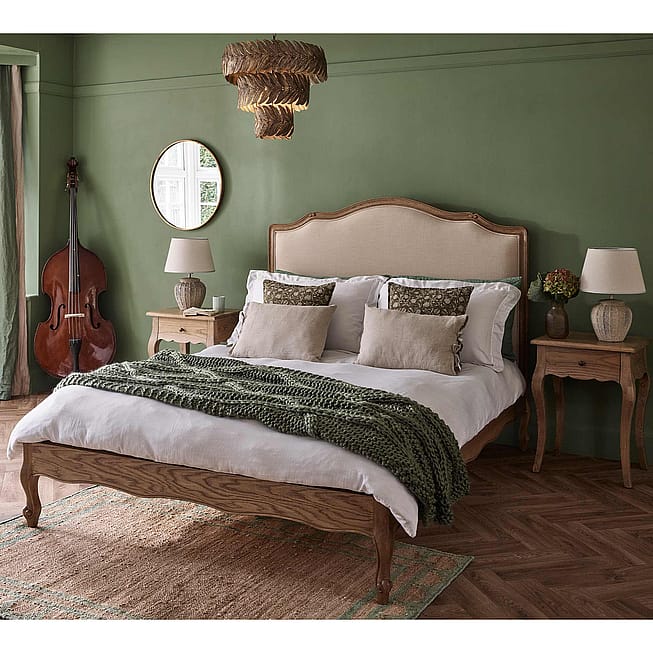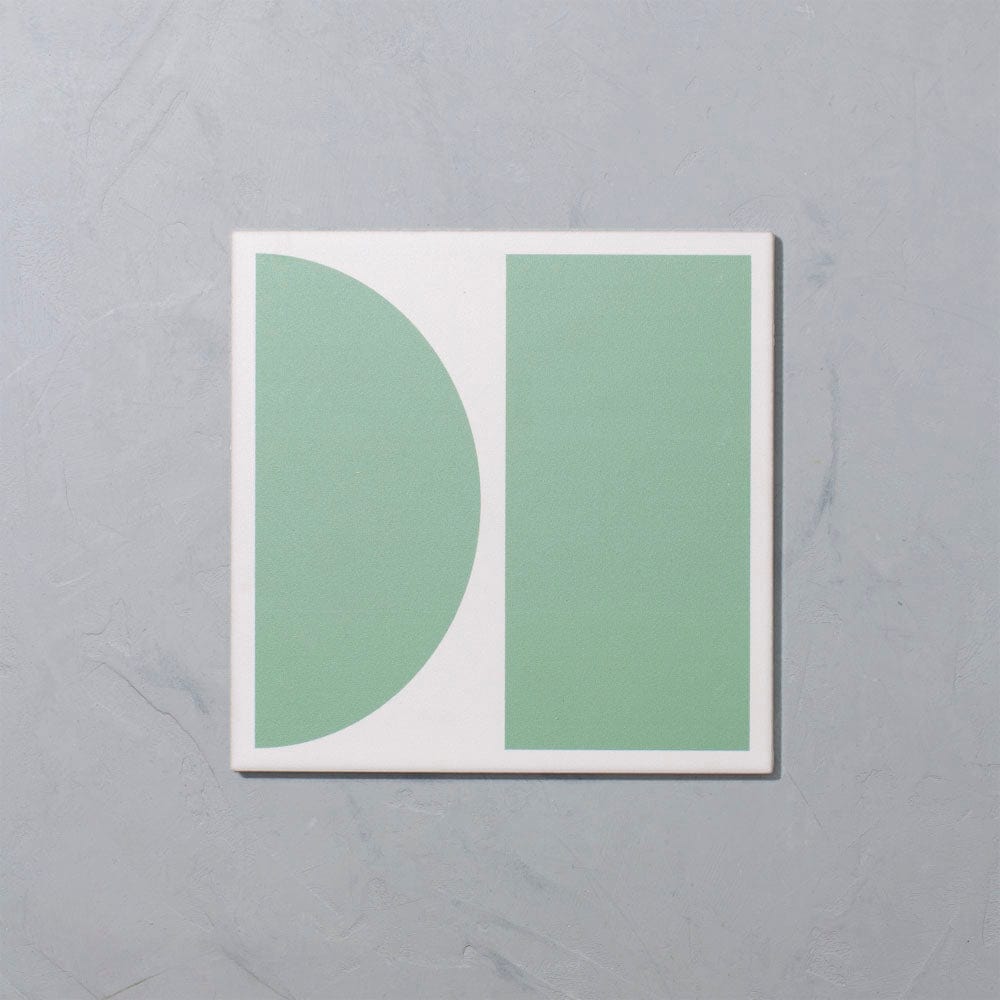'I love to mix eras. I don’t believe you have to stick to one style'
A sympathetic restoration and a modern extension have given this period property a new start as a practical family home
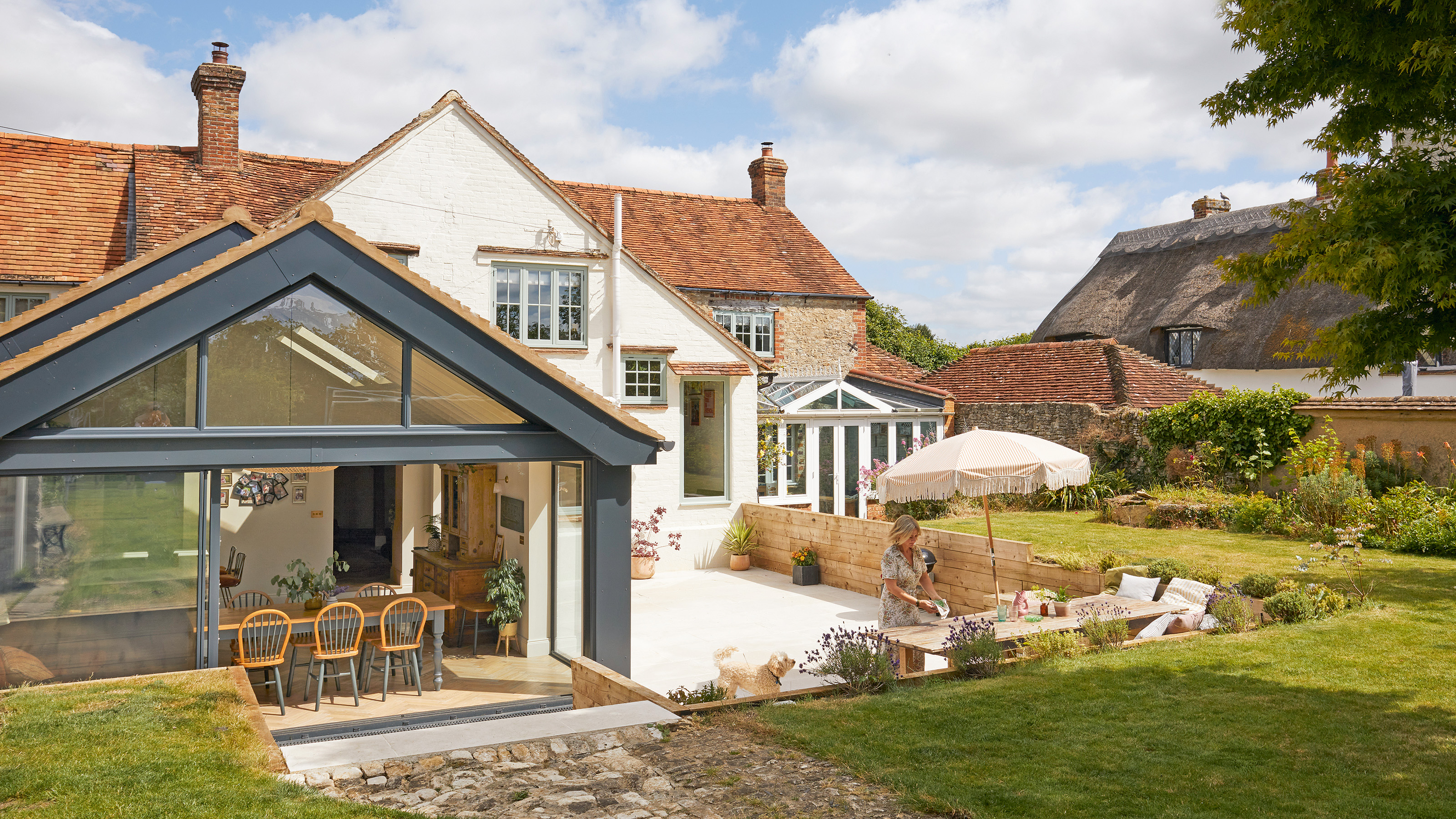
Swapping London for rural life was an easy decision for Kate and Arnold, who were keen for their children to reap the benefits of country living.
However, finding the right location wasn’t so easy, thanks to a long wishlist that included being close to London, good schools and a pub. Many viewings later, the couple found their dream home on the edge of a village green. ‘It was big enough for what we wanted, but there was a lot to renovate,’ says Kate.
Before plans could be drawn up, a Heritage Report was required to determine the age of every part of the house and identify areas of historical interest that had to be kept. ‘We worked with our architect to stay faithful to the history of the house, while creating a layout that works for us.’ It took 18 months to get planning permission, then work could start.
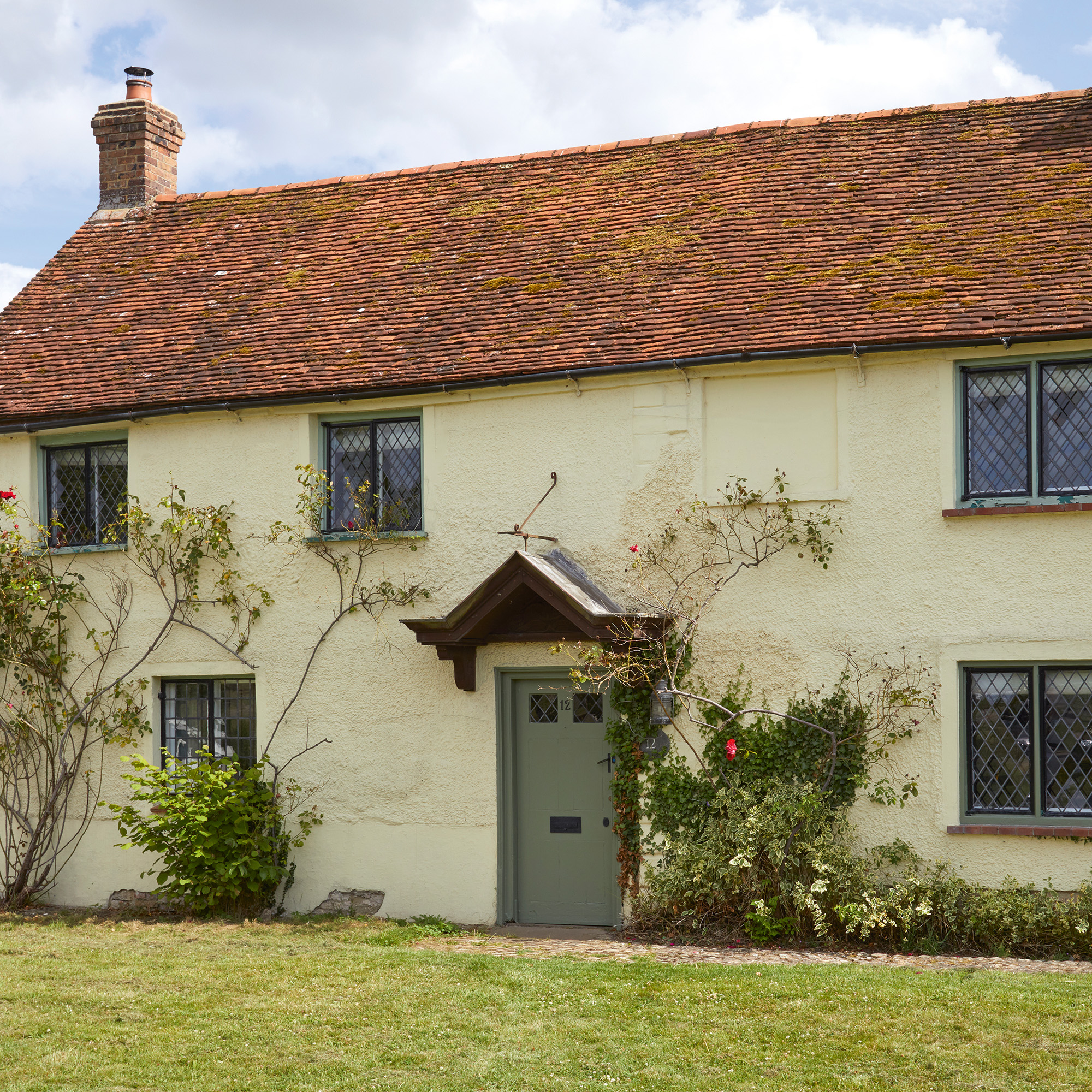
Extending out
The house had last been updated in the 1970s and needed a complete overhaul, including turning the dark, compact rooms into spaces with flow. The solution was to replace an old lean-to with a pitched-roof extension, creating a bright kitchen-diner.
‘The pitch of the extension mirrors the house, and we used similar roof tiles to make it blend in. The only giveaway is the modern glazing – it floods the space with light and creates a seamless link with the new patio,’ says Kate. ‘We added a gable window above the doors to make the most of the views.'
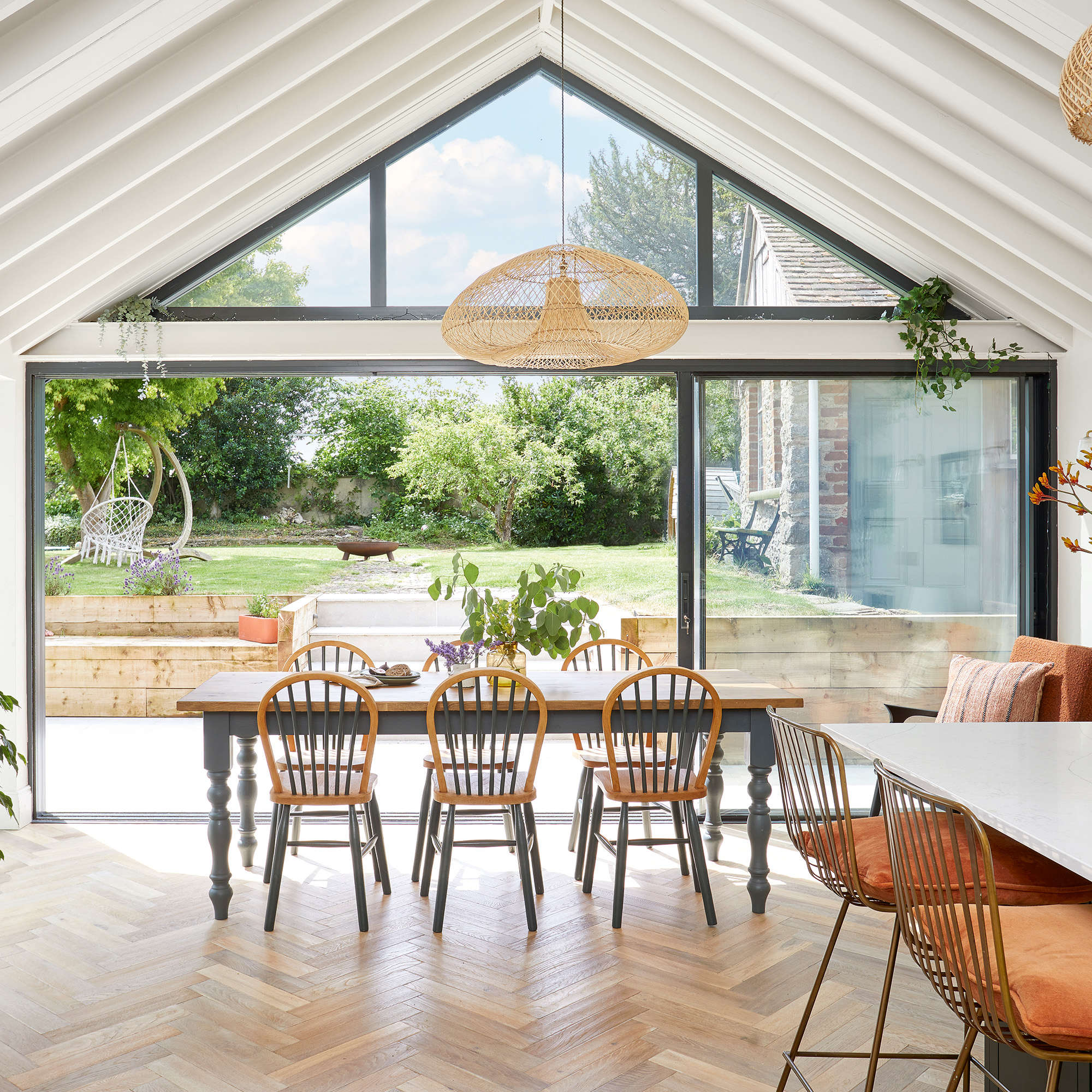
With the new kitchen diner extension in place, Kate turned the old kitchen into a cosy snug. 'I love to mix eras. I don’t believe you have to stick to one style,' says Kate.
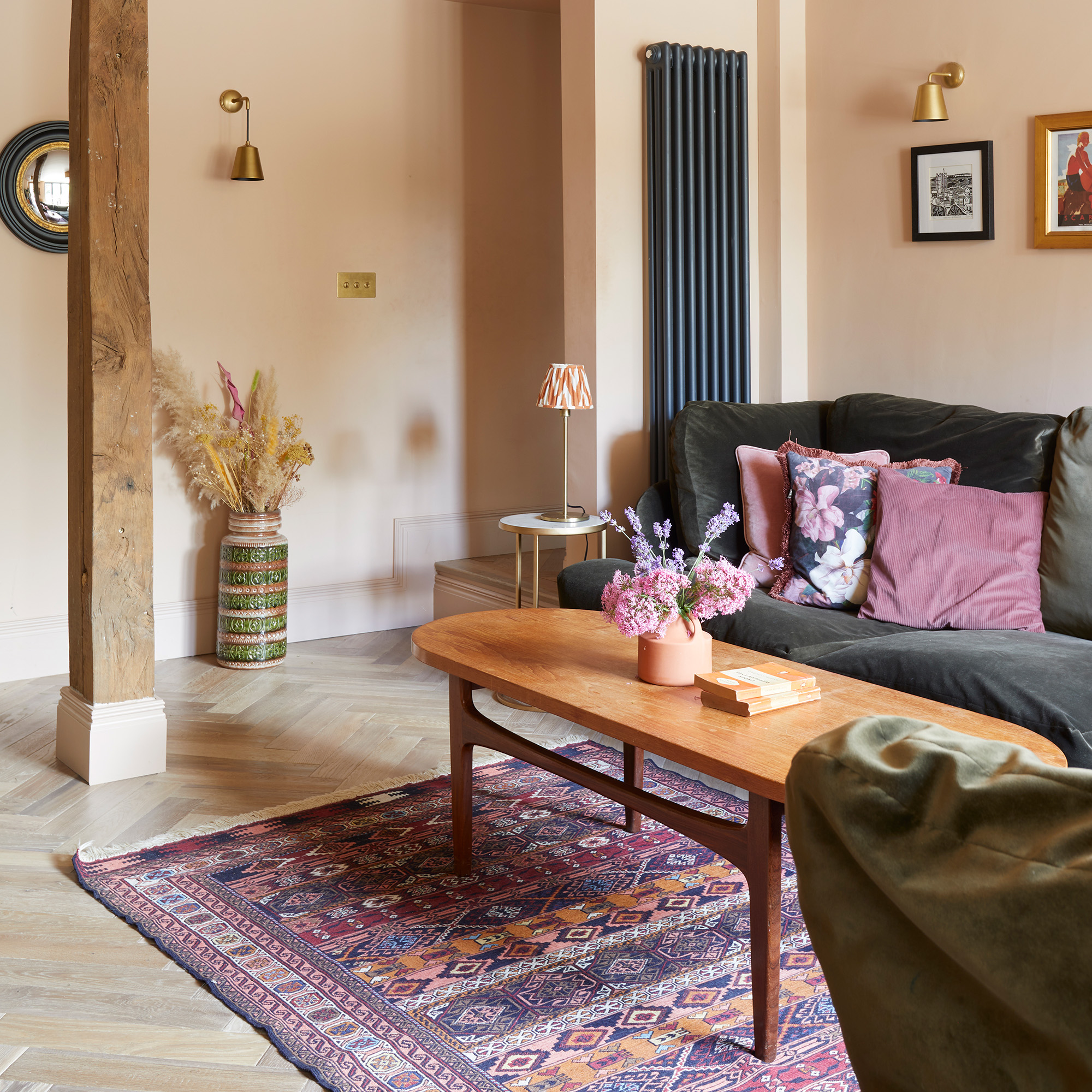
Reconfiguring the layout
Functionality was top priority when it came to the ground floor and kitchen layout, and Kate added a large utility and small pantry to the extension.
Get the Ideal Home Newsletter
Sign up to our newsletter for style and decor inspiration, house makeovers, project advice and more.
‘The modern utility was one of the best decisions we made as all the appliances can be tucked away behind the reeded glass pocket door,’ says Kate.
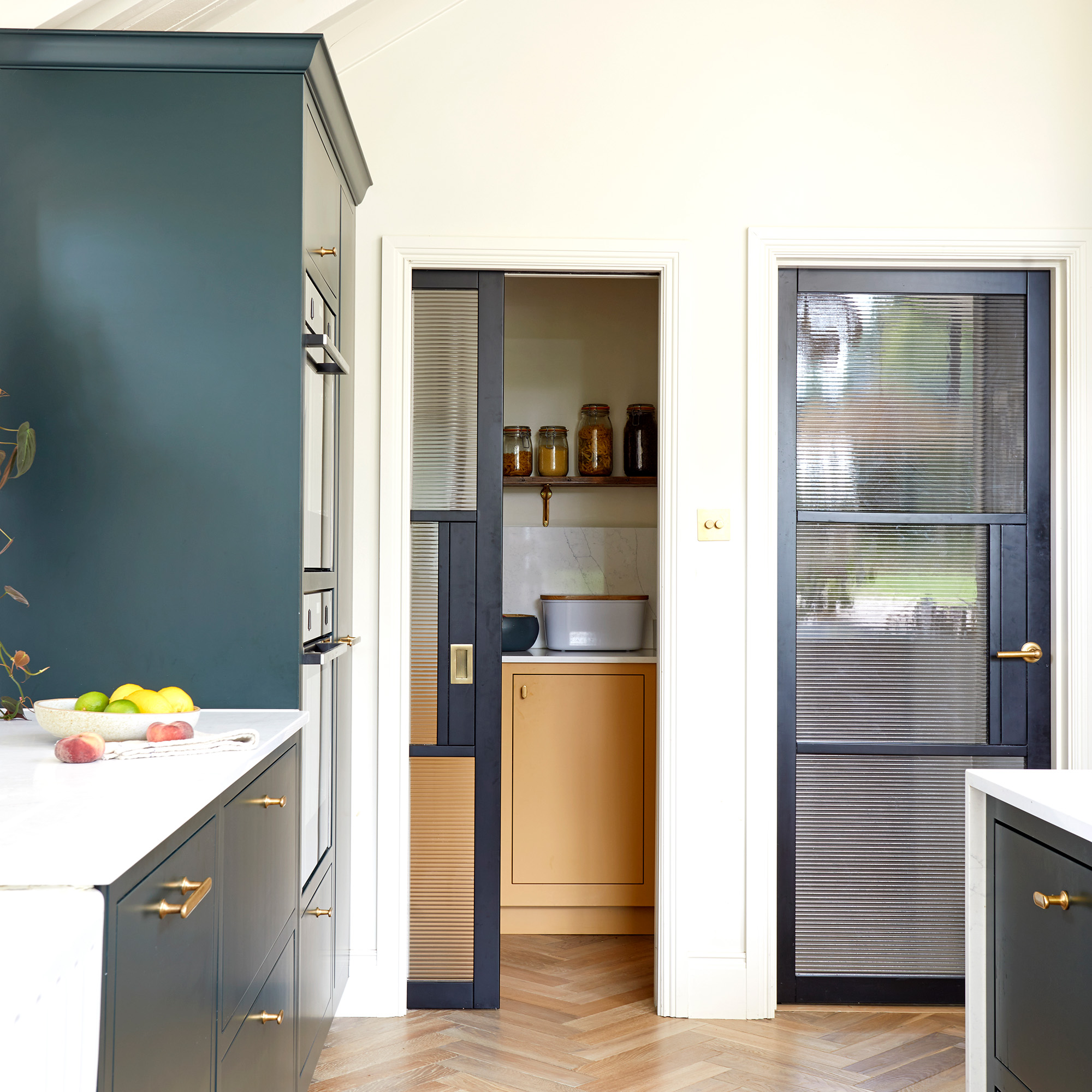
‘To create a bold contrast to the pale walls and ceiling, we went for cabinetry painted in Studio Green by Farrow & Ball and added brushed brass handles for a period touch,’ says Kate.
A quartz worktop is durable, low-maintenance and easy to clean, making it the ideal choice for a busy family kitchen.
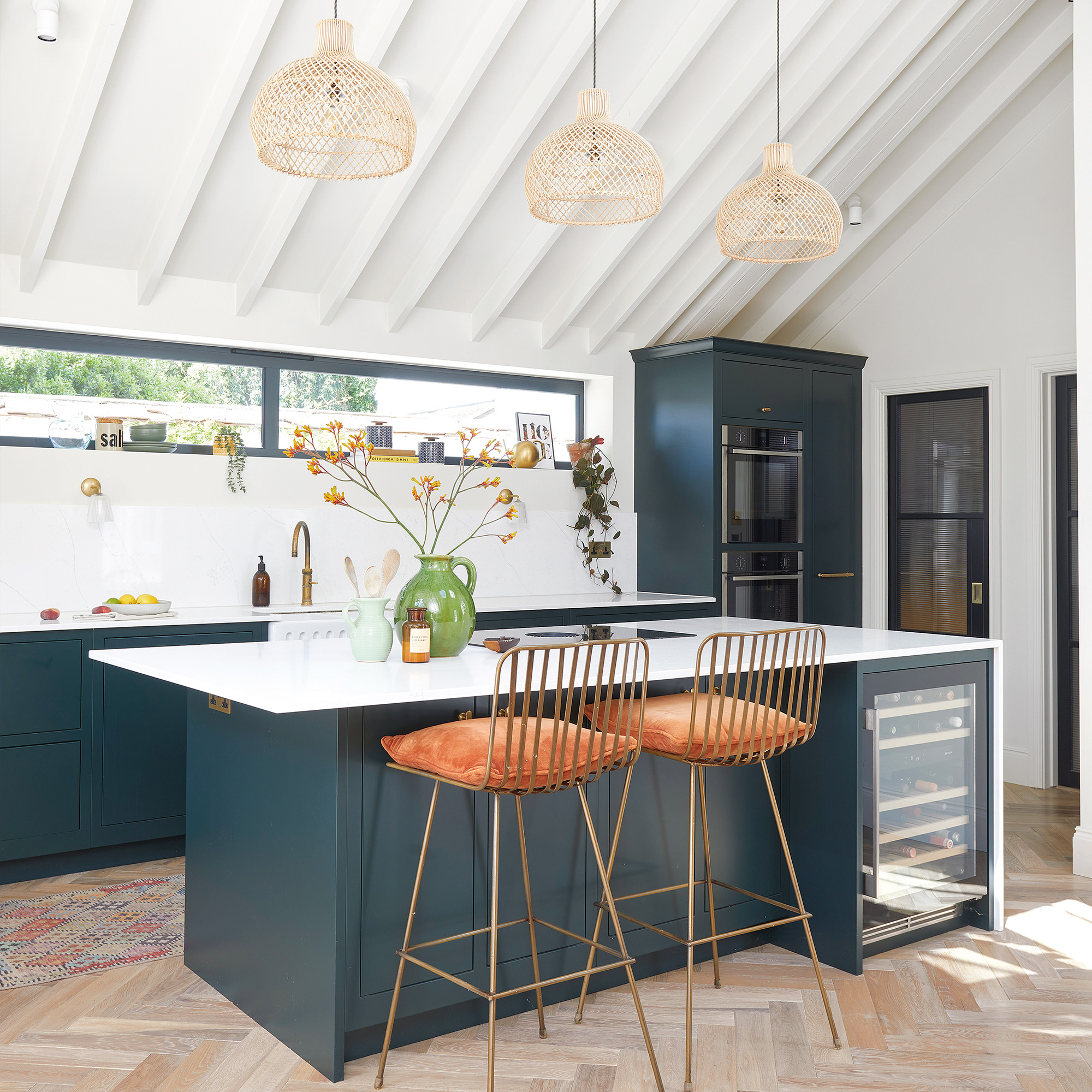
Reworking the older part of the house, however, was more challenging due to its Grade II listing.
The architects devised clever adaptations, such as dividing an awkward yet historically important area of the house into a guest en suite and a cloakroom.
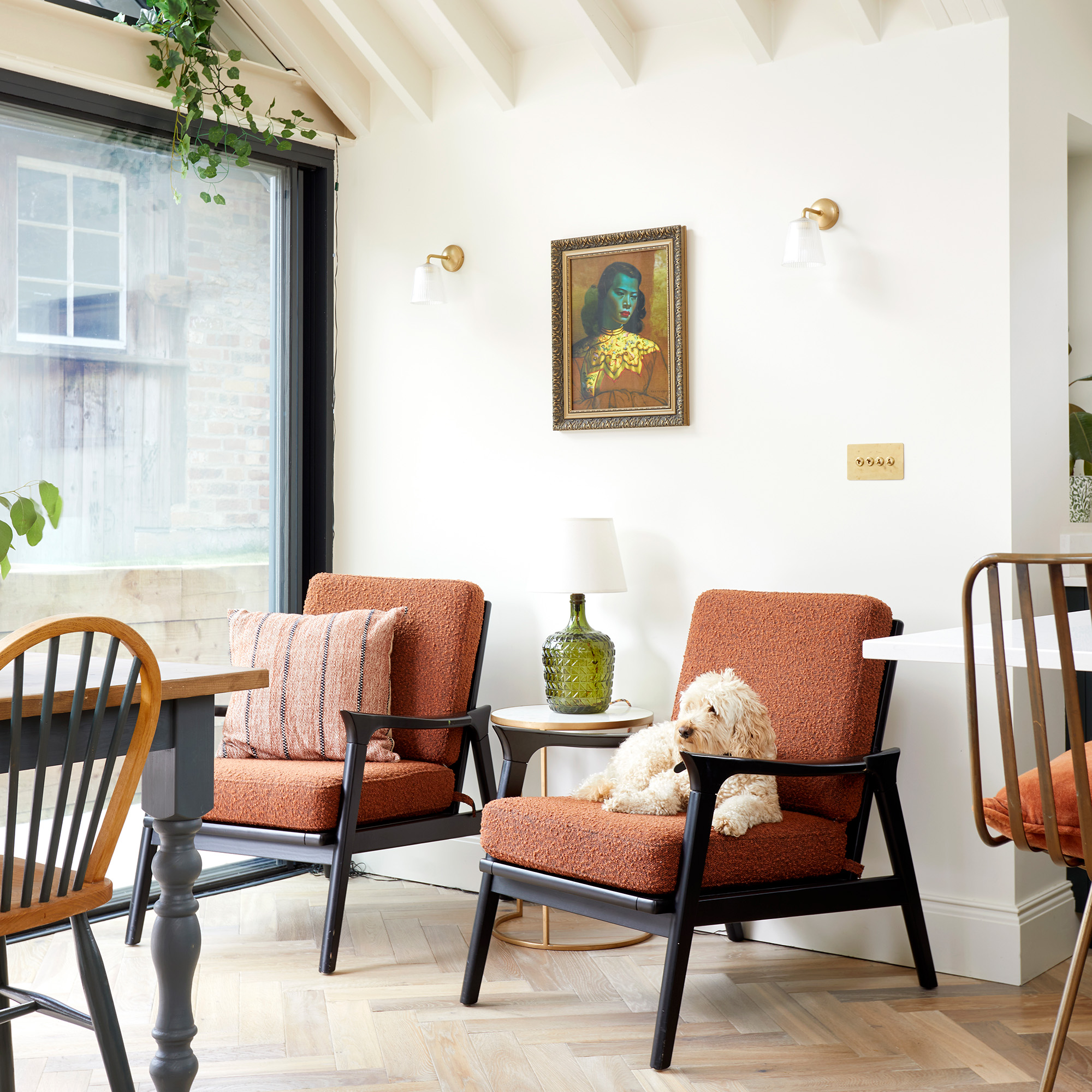
Adding warmth and character
Kate has created a cosy, layered look that flows cohesively from room to room, despite each space feeling uniquely different in character.
‘When it came to decorating, I allowed the period features and the daylight levels to direct me,’ she says.
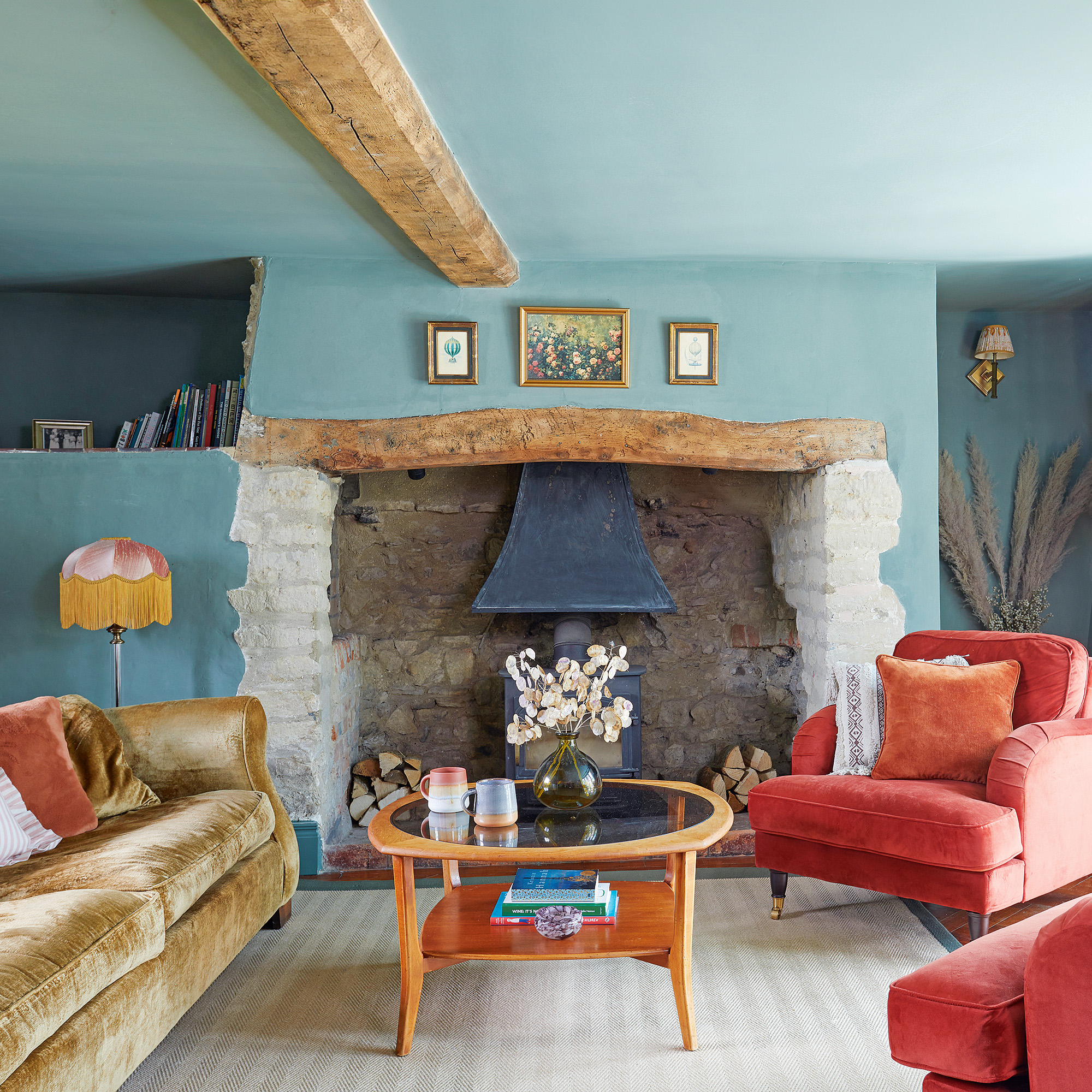
‘I’ve added richer colours like deep greens and pinks in the darker rooms, and kept the brighter rooms light and airy, while the old, rustic elements of the house have been enhanced with vintage furniture, tactile tiles and quirky heirlooms. It’s come together perfectly and we couldn’t be happier.’
Restoring the original beauty
The beams required restoration. ‘We hired a firm which specialises in low-pressure micro-strip soda blasting designed for listed buildings, and it was the best investment we made. The beams bring warmth and interest to the rooms,’ says Kate.
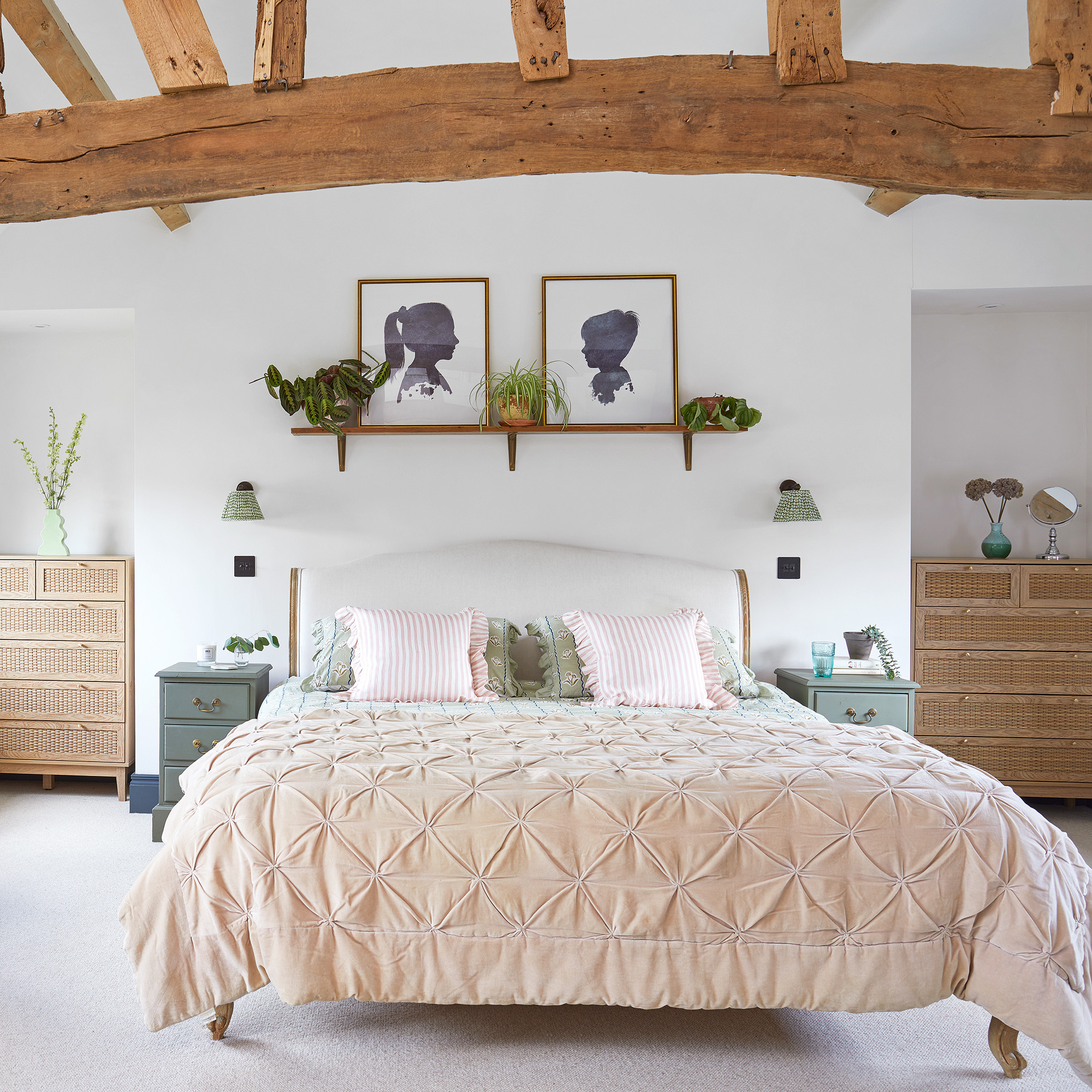
‘The master bedroom was originally three small rooms – but we felt it was perfectly positioned to become a main suite with its own corridor away from the kids’ bedrooms,’ says Kate.
‘Taking out all the walls meant the ceiling had to come down, and that’s when we found the beautiful attic beams, crying out to be a vaulted ceiling.’
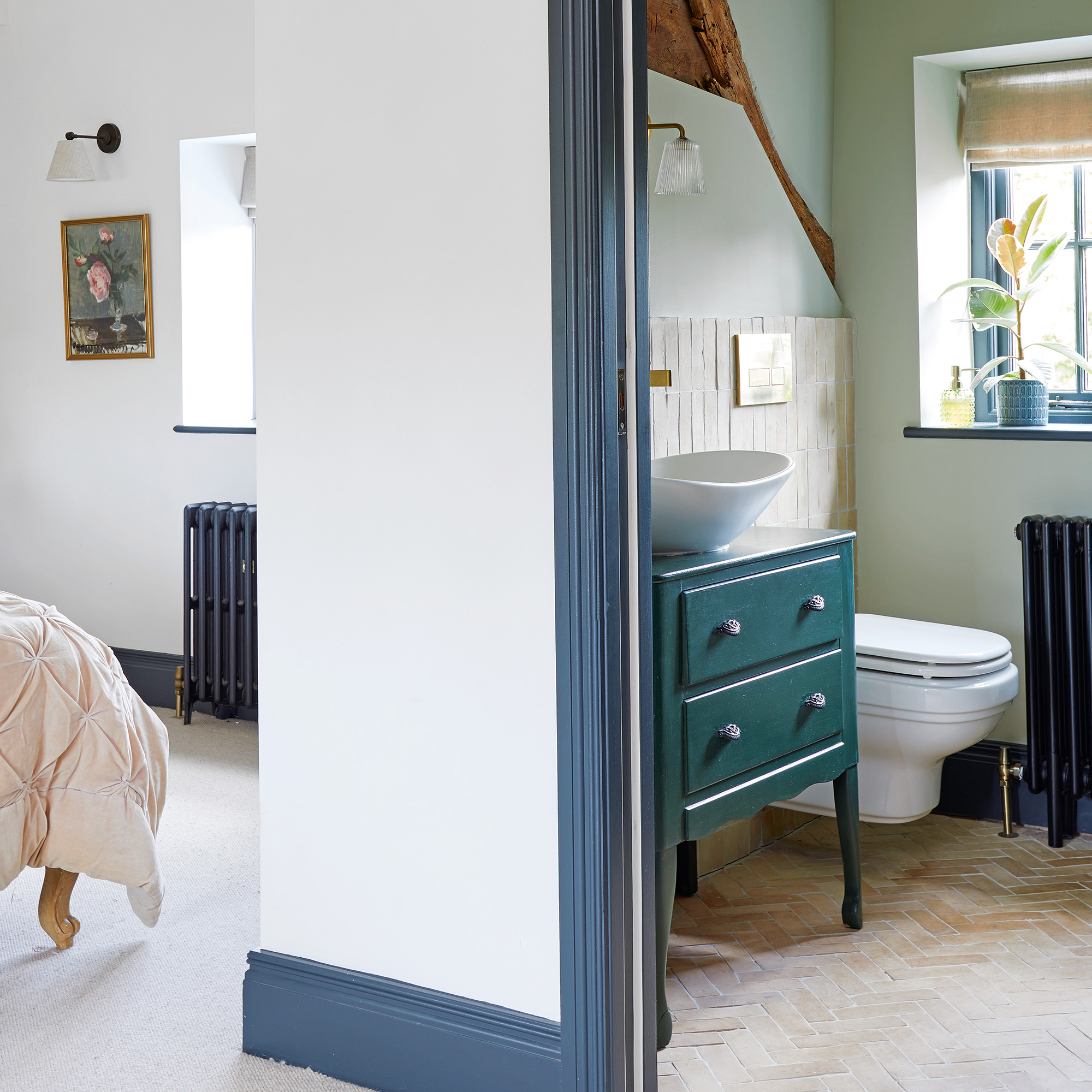
The couple also restored the wood floor in the guest room, scraping away a screed to reveal quarry tiles.
‘We’ve reused as much as possible, such as the upstairs floorboards that became shelving in the utility and bathrooms, and wall cladding in our bedroom. I even repurposed three mid-century cabinets and turned them into vanity units.’

Get the look
This article first appeared in Ideal Home magazine. Subscribe and save here.
You must confirm your public display name before commenting
Please logout and then login again, you will then be prompted to enter your display name.
-
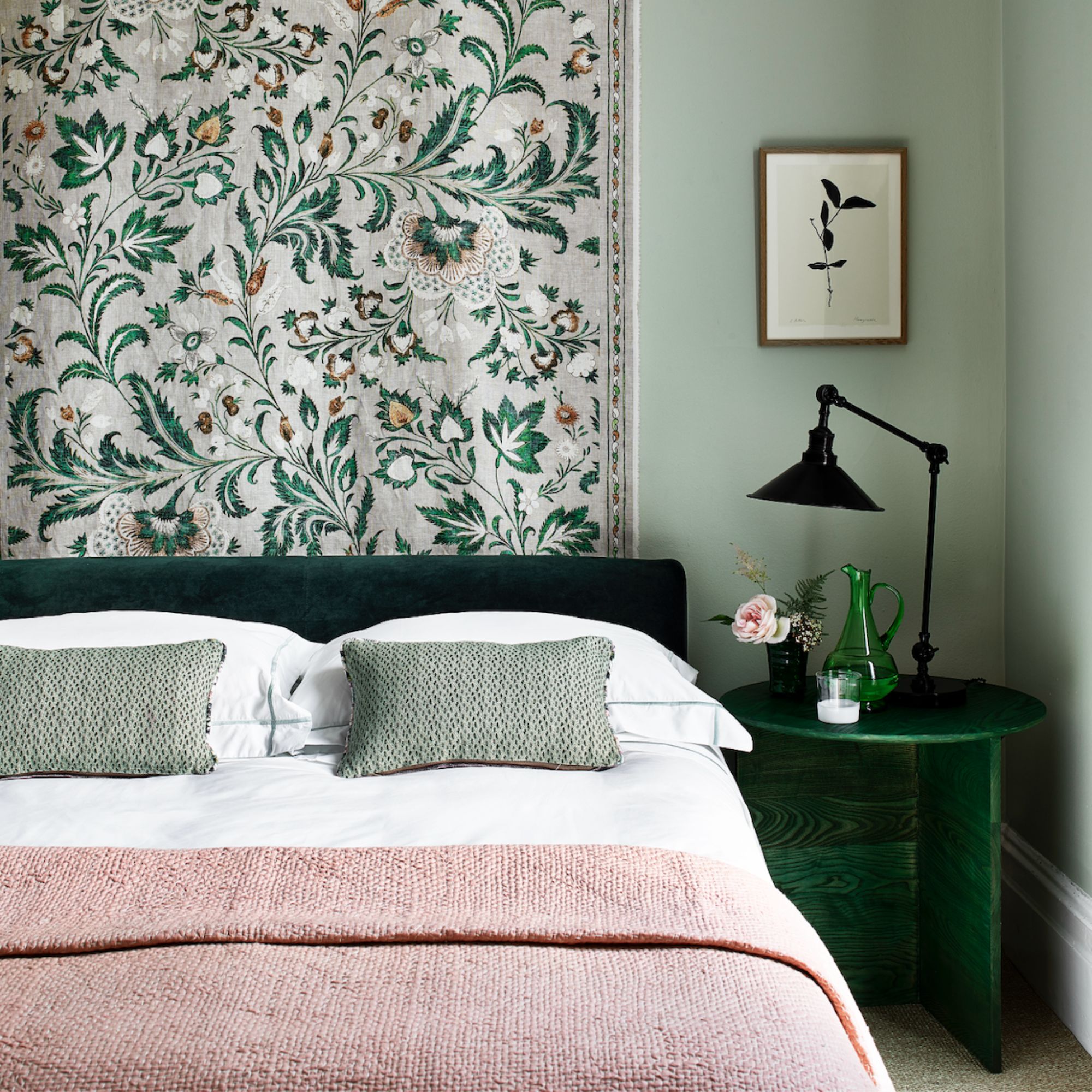 Sorry florals, botanical patterns are trending for 2025 – interior experts share the best ways to make them work in your home
Sorry florals, botanical patterns are trending for 2025 – interior experts share the best ways to make them work in your homeEmbrace bold blooms in your scheme
By Maddie Balcombe
-
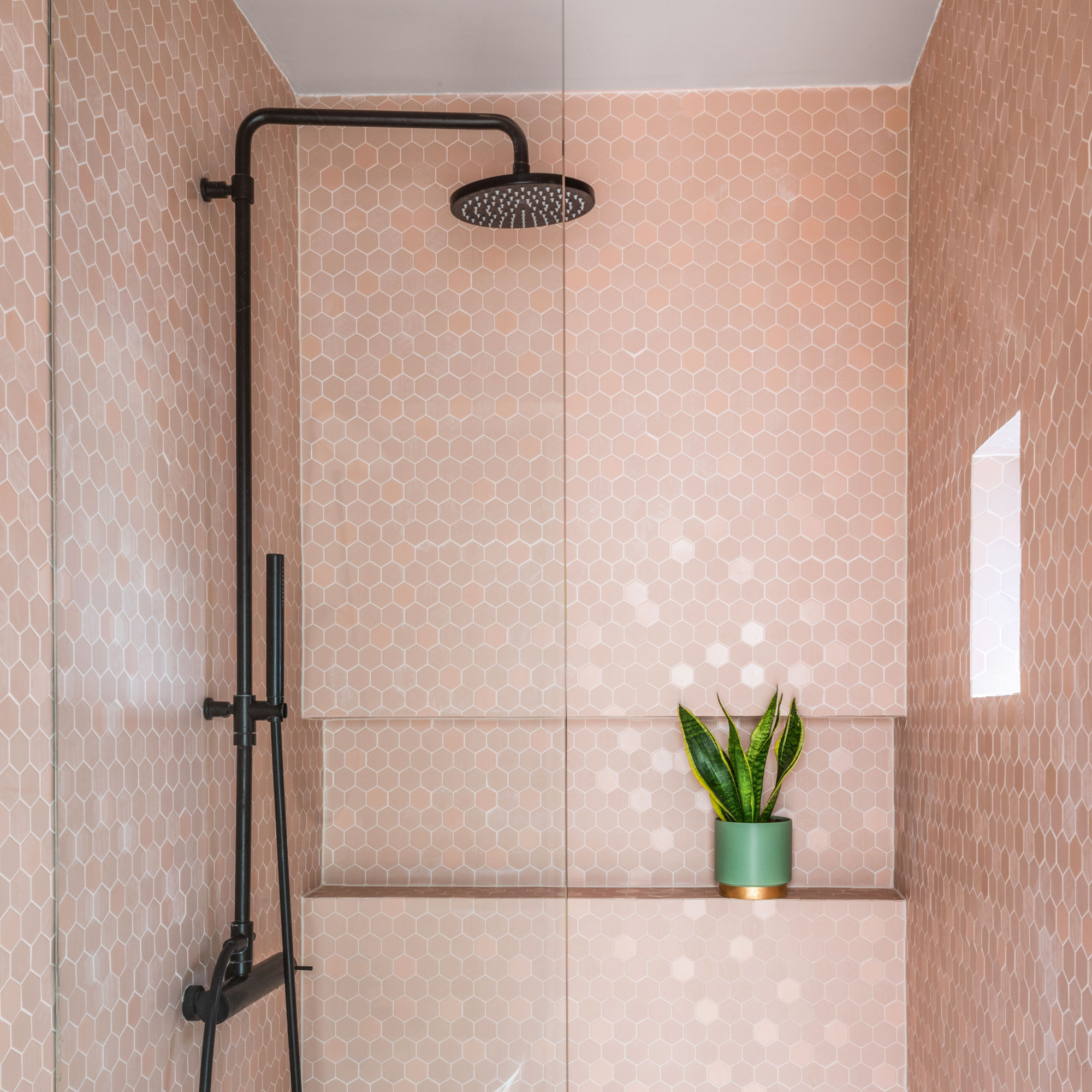 Are rainfall shower heads out of style in 2025? These 3 alternatives could be the next best thing
Are rainfall shower heads out of style in 2025? These 3 alternatives could be the next best thingIt could be time to try something new
By Holly Cockburn
-
 How to attract swifts and swallows to your garden - garden experts say these 3 features will make these birds feel welcome
How to attract swifts and swallows to your garden - garden experts say these 3 features will make these birds feel welcomeSwifts and swallows are a welcome sight every summer, and this is how to ensure you see them in your garden
By Kezia Reynolds
